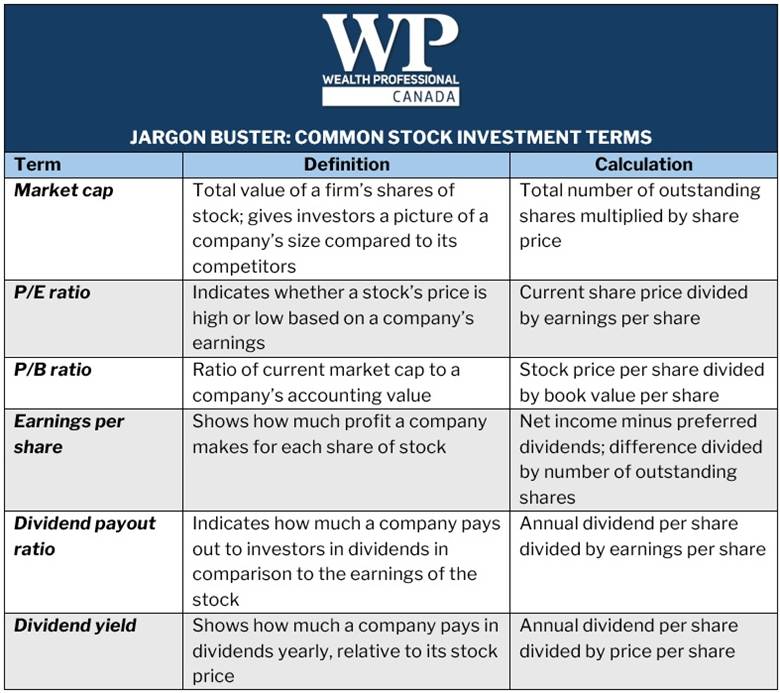Scotiabank stocks are back in focus—discover what Canadian investors should know about their performance, prospects, and portfolio potential

After a strong close out in 2024, the Bank of Nova Scotia – popularly known as Scotiabank – got off to a rather rough start in 2025. As of this writing, the value of Scotiabank stocks (BNS-T) has hovered around $71 per share, an almost 8 percent drop from December values. The banking giant’s market capitalization also had a 6 percent decline, currently at $88.89 billion.
On the upside, Scotiabank continues to pay the highest dividends among the Big Six banks, making it a favourite among dividend-seeking investors. But is this enough to make BNS stocks a good investment? Wealth Professional crunches the numbers to find out.
How are Scotiabank stocks performing?
Analysts attribute the recent dip in Scotiabank stock value to recession fears brought about by a potential global trade war. With a strong presence in the US, a trade war can result in lower profits for the Canadian banking giant.
Despite the threat, BNS stock has climbed almost 7.87 percent over the past year, outperforming many of its industry rivals. While the share price dropped over 6.23 percent in the past six months, it has been rising steadily in the past few weeks after hitting a six-month low of $63.48 on April 7.
This short-term pullback, however, is common for Canadian banks after a strong run. Scotiabank’s current share price of $71.37 still lies at the midpoint of its 52-week high and low of $60.68 and $80.14.
To bolster profits, the banking heavyweight made key strategic moves. Among these is shifting its focus to stable, higher-profit opportunities in North America. Scotiabank invested US$2.8 billion to acquire a 14.9 percent stake in American regional bank KeyCorp. The deal is predicted to increase Scotiabank’s income for the second quarter.
Despite losing over $1.3 billion after exiting some Latin American markets, Scotiabank reported adjusted net income of $2.36 billion in the first quarter. This figure is a 6.8 percent increase year-on-year. The bank also posted solid results from its wealth management and capital markets segments.
In addition, Scotiabank stock has registered a beta of 0.68. This means that it’s a stable investment option amid uncertainties surrounding the global banking sector.
Scotiabank stocks key metrics
To find out whether Scotiabank stock is a good buy, there are several key performance indicators that we need to look at. We’ll go over some of them. The figures below are current as of May 14, 2025 and intended only for informational purposes, not for trading.
Scotiabank stocks market cap: $88.89 billion
After a huge decline in 2022, Scotiabank’s market cap has been increasing steadily, reaching $93 billion in the first quarter of 2025. Uncertain market conditions and a shift in its business strategy may have contributed to a slight dip in the second quarter. There are signs, however, that the downtrend is temporary. Resilience and quick recovery can be an indication of a good bank stock.
When deciding to invest in a bank stock like Scotiabank, it helps to get historical look at the bank’s market cap. Here’s the bank’s market cap for the past five years:

Scotiabank stocks P/E ratio: 14.51
Scotiabank’s price-to-earnings (P/E) ratio is at 14.51, which is below the market average of 20 to 25. This can indicate two things:
- Scotiabank stock is undervalued
- Scotiabank is performing well
The banking giant’s P/E ratio falls in the good to excellent range. This can mean that investors are paying less for each dollar of earnings.
Scotiabank stocks P/B value ratio: 1.19
Price-to-book (P/B) ratio allows investors to evaluate whether the stock is overvalued or undervalued relative to its net asset value. A P/B ratio of 1 suggests that the stock is trading at a premium, while a figure below 1 may indicate that a stock is undervalued.
Scotiabank’s P/B ratio of 1.19 indicates that its stock is trading above its book value, which can mean that investors see future growth or earnings potential. This figure, however, is below its 10-year average of 1.39. This means that Scotiabank stocks are cheaper than they have been on average in the past decade.
Scotiabank stocks basic EPS: $5.06
Historical data shows that Scotiabank’s earnings per share on May 14 are above its 2024 average of $4.31. The figure is also above its 10-year average of $4.90 but below its 10-year high of $6.21 in 2022.
EPS provides investors with a straightforward way to assess a company’s financial health and performance. It measures a company’s profitability on a per-share basis. Scotiabank stocks EPS is lower than most of its competitors. This doesn’t mean that Scotiabank isn’t performing well, though it shows that industry rivals are performing better.
Scotiabank stocks dividend yield: 6%
Scotiabank boasts the highest dividend yield among the Big Six banks. It has also been paying dividends consistently since 1832. This makes Scotiabank stocks a popular choice for investors looking for regular dividend payouts.
Scotiabank stocks dividend payout ratio: 83.71%
Scotiabank returns more than four-fifths of its earnings to shareholders in the form of dividends. Only TD Bank has a higher DPR among the country’s major banks. This can be an indication that Scotiabank has strong earnings. On the flipside, this can also mean that the banking giant has less retained earnings that can be used for reinvestments to help grow the business.
For new investors, here’s what these metrics mean. You can download the table for easy access:

You can learn more about the common stock investment buzzwords by checking out our guide on how to buy stocks for beginners.
How does Scotiabank compare with other Big Six banks?
To give you an overview of how BNS stocks compare with those of other major Canadian banks, WP has compiled figures from TradingView, TMX Money, and Morningstar.
Here’s a side-by-side comparison of the stocks from the Big Six banks using the key metrics above. All figures are current as of May 14, 2025. They are intended only to provide information and not to be used for trading purposes.

Meanwhile, here’s a side-by-side comparison of the share price of Scotiabank stocks vs. the Canada’s largest banks as of May 14, 2025.

If you want more information on the best-performing Canadian bank stocks, this guide provides a comprehensive analysis.
Is Scotiabank stock a good buy?
After registering almost 20 percent gains in 2024, Scotiabank stock posted a 7.5 percent decline in the first few months of the year. In the past few weeks, however, the value of BNS stock has risen over 12 percent. This comes as trade tensions have begun to ease, coupled with the strong performance of the financial markets.
But these aren’t the only reasons why the stock can be a good addition to your portfolio. Let’s look at some of the other factors why Scotiabank is a good stock to buy.
Dividend yield
As of the writing, BNS stock is trading at $71.37 per share. At this market price, the stock offers an enticing 6 percent annualized dividend yield – the highest among the Big Six – paid quarterly. Because of this, the stock can be a good option if you’re an income-focused investor looking for a low-risk investment.
Strategic shift
Scotiabank’s divestment of its retail banking operations in Colombia, Costa Rica, and Panama to focus more on North America has sparked renewed interest from investors. Many in the market view this shift as a move toward efficiency and increased profits.
There are varying opinions about the long-term impact of the recent investment in KeyCorp. However, it’s clear that the goal is to deliver stable profits and reduce exposure to underperforming markets.
Diversified revenue streams
In its latest quarterly financials, Scotiabank reported a 4 percent year-on-year growth in adjusted earnings to $1.76 per share. Growth was huge in its global banking and markets segment, which saw earnings surge 33 percent year-over-year. The rise was driven primarily by the strong performance of its capital markets business and higher advisory revenues.
The banking giant’s wealth management unit also posted a 22 percent jump in year-on-year earnings mostly because of higher mutual fund fees and brokerage revenue.
Capital efficiency
Scotiabank’s common equity tier 1 (CET1) ratio of 12.9 percent reflects its financial strength and ability to withstand losses. This means that the bank has the financial flexibility to grow its dividend, make targeted acquisitions, and buy back shares. All these strategies can help boost returns, especially in a strong economy.
Digital, ESG investments
Scotiabank’s focus on digital transformation and responsible banking aligns with what regulators and consumers want. This makes the banking heavyweight an appealing option for investors searching for companies with strong environmental, social, and governance (ESG) practices.
If you’re a new investor and need help navigating stock investments, the best route is to work with an experienced financial advisor. You can find one by visiting our Best in Wealth Special Reports page.
How to buy Scotiabank stocks
The simplest way to invest in Scotiabank stocks is through the bank’s Scotia iTrade portal. You can do so in three steps:
Step 1: Open an account
You will need to provide your Social Insurance Number and a government-issued ID. If you want a non-Scotiabank account to be linked to a new Scotia iTrade account, you will need to submit a void cheque. Online applications usually take between 15 and 20 minutes.
Step 2: Add or transfer funds
You have three options:
- Option 1: From another Scotiabank account: Use the “Move Money” or “Transfers” tab from your Scotia Online account or the Scotia iTrade app
- Option 2: From another financial institution: Download and fill out the electronic funds transfer (EFT) form and mail to Scotiabank’s Toronto office; you can find the full mailing address on Scotiabank’s website
- Option 3: From another investment account: Submit a transfer authorization request; you can do so online through your Scotia iTrade account or by mail if your account is under another financial institution
Step 3: Place a trade
You can buy Scotiabank stocks by clicking the “Trade Now” tab. Just enter the symbol or company name and fill out the parameters on the screen. You can also buy exchange-traded funds (ETFs) and options this way. After this, click submit and you’re done.
Scotiabank also offers educational tools and resources through the Scotia iTrade platform.
Why invest in Scotiabank stocks
Scotiabank’s recent strategic moves – including exiting certain markets in Latin America and shifting focus to North America – show that it’s playing the long game. The banking giant also remains financially strong, giving it the flexibility to fuel growth or weather market challenges.
The bank’s focus on digital innovation and solid performance of key businesses, including in capital markets and wealth management, put Scotiabank in prime position for future expansion.
So, while Scotiabank stocks may not surge overnight, they can be a smart investment for investors looking for stable dividends and long-term growth.
If BNS stocks don’t fit your investment goals, you can also check out our detailed analysis of the other Big Six stocks:
Visit our Investment News Section for the latest on stock investing. Bookmark this page for easy access to breaking news, expert insights, and the latest industry trends.



